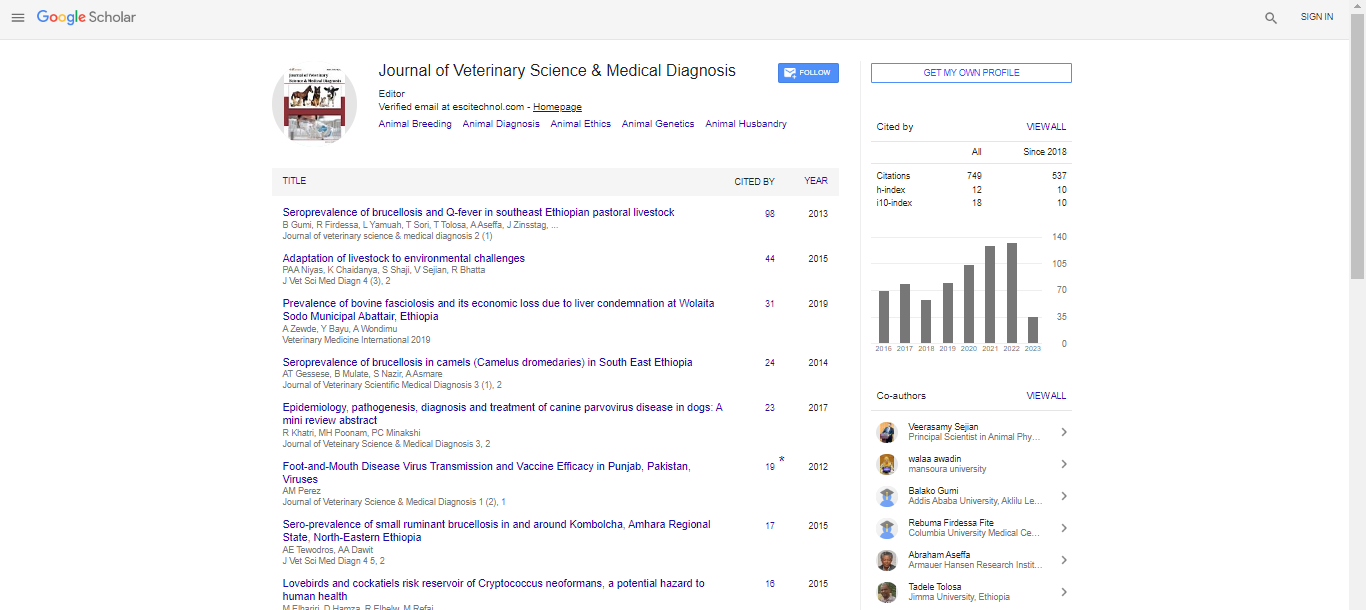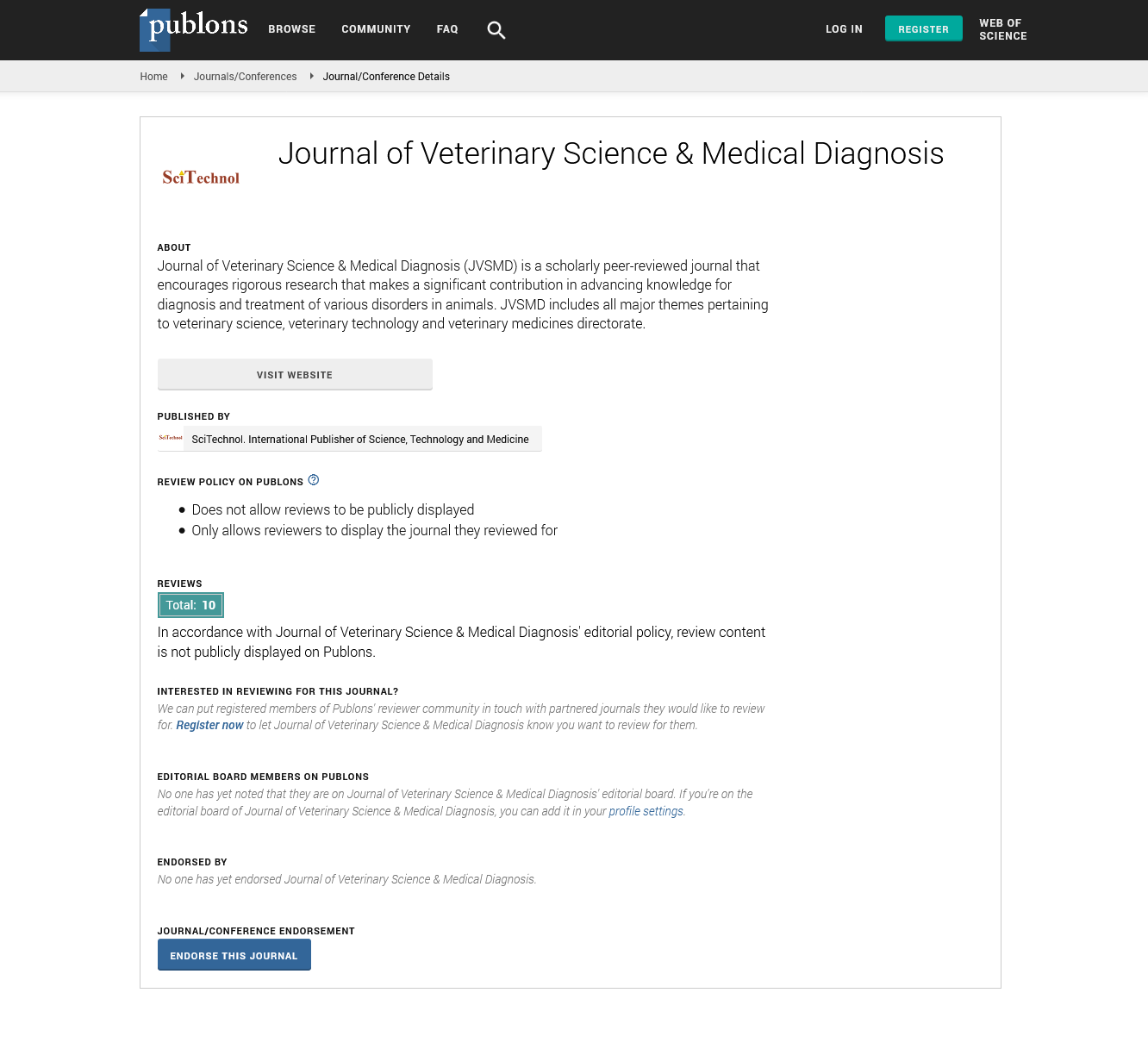Opinion Article, J Vet Sci Med Diagn Vol: 12 Issue: 1
Importance and Uses of Genetically Modified Animals
Noeme Sousa*
Department of Veterinary Sciences, Paulista State University, Sao Paulo, Brazil
*Corresponding Author: Noeme Sousa
Department of Veterinary Sciences,
Paulista State University, Sao Paulo, Brazil
E-mail: noeme@unesp.br
Received date: 02 January, 2023, Manuscript No. JVSMD-23-89771;
Editor assigned date: 04 January, 2023, Pre QC No. JVSMD-23-89771(PQ);
Reviewed date: 18 January, 2023, QC No. JVSMD-23-89771;
Revised date: 25 January, 2023, Manuscript No: JVSMD-23-89771(R);
Published date: 03 February, 2023, DOI: 10.35248/2325-9590.23.12.100033.
Citation: Sousa N (2023) Importance and Uses of Genetically Modified Animals. J Vet Sci Med Diagn 12:1
Description
Genetically modified animals are organisms whose genetic material has been artificially altered by introducing foreign genes or modifying the existing genes. This process is known as genetic engineering or genetic modification, and it has become a common practice in many areas of scientific research, including animal breeding and biotechnology.
The production of genetically modified animals involves several steps, including gene selection, gene transfer, and animal breeding. The first step is to select the gene that needs to be introduced or modified. This is often done by identifying a specific trait or characteristic that is desirable, such as resistance to a particular disease, increased milk production, or improved meat quality. Once the gene is selected, it is transferred into the animal's genome using various techniques such as microinjection, electroporation, or gene targeting. Finally, the genetically modified animal is bred with other animals to create a new generation of genetically modified animals that possess the desired traits. One of the major benefits of genetically modified animals is their potential to improve the agricultural industry. For example, genetic modification can increase the yield of crops and improve the nutritional content of animal feed. This can lead to increased food production and better nutrition for both animals and humans. Moreover, genetically modified animals can also be used to produce valuable medical products, such as insulin, human growth hormone, and clotting factors, which are used to treat various diseases.
However, the production of genetically modified animals also has its drawbacks. One of the major concerns is the potential for unintended consequences, such as the creation of new diseases or the introduction of harmful traits into the environment. Moreover, genetically modified animals may face a higher risk of health problems due to the complex interactions between their altered genes and their environment. Finally, there are ethical considerations surrounding the use of animals in research and breeding programs, particularly with regard to their welfare and the potential for animal suffering.
In conclusion, the production of genetically modified animals is a complex process that offers both benefits and drawbacks. While it has the potential to improve the agricultural industry and provide valuable medical products, it also raises concerns about unintended consequences, animal welfare, and ethical considerations. As such, it is important to carefully consider the potential benefits and drawbacks of genetically modified animals, and to carefully regulate their production and use to ensure their safety and ethical treatment. Genetically modified animals are animals that have had their genetic makeup altered through the insertion, deletion, or modification of genes. This process can be used for a variety of purposes, including scientific research, agriculture, and medicine. Some specific applications and uses of genetically modified animals include biomedical research, agriculture, environmental conservation, biotechnology, xenotransplantation. Genetically modified animals are used to study human diseases, develop new drugs and therapies, and understand basic biological processes. For example, mice can be genetically modified to develop human diseases such as cancer or Alzheimer's, allowing researchers to study the disease in a way that would not be possible in humans. Genetically modified animals can be used to improve animal health and productivity, as well as to produce food with desirable traits. For example, pigs can be genetically modified to be resistant to certain diseases, which can reduce the need for antibiotics and improve food safety. These animals can be used to control invasive species or prevent endangered species from going extinct. For example, genetically modified mosquitoes have been developed to reduce the spread of diseases such as malaria and dengue fever. These animals can be used to produce valuable products such as insulin, which is used to treat diabetes. This process is known as biopharming and can be used as a source of organs and tissues for transplantation into humans. For example, pigs can be genetically modified to have organs that are less likely to be rejected by the human immune system. It is important to note that there are also ethical, environmental, and safety concerns associated with genetically modified animals.
 Spanish
Spanish  Chinese
Chinese  Russian
Russian  German
German  French
French  Japanese
Japanese  Portuguese
Portuguese  Hindi
Hindi 
